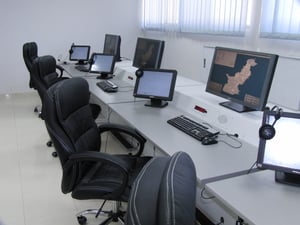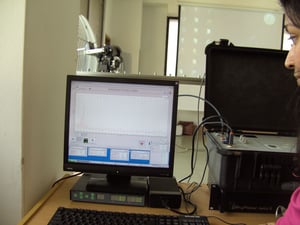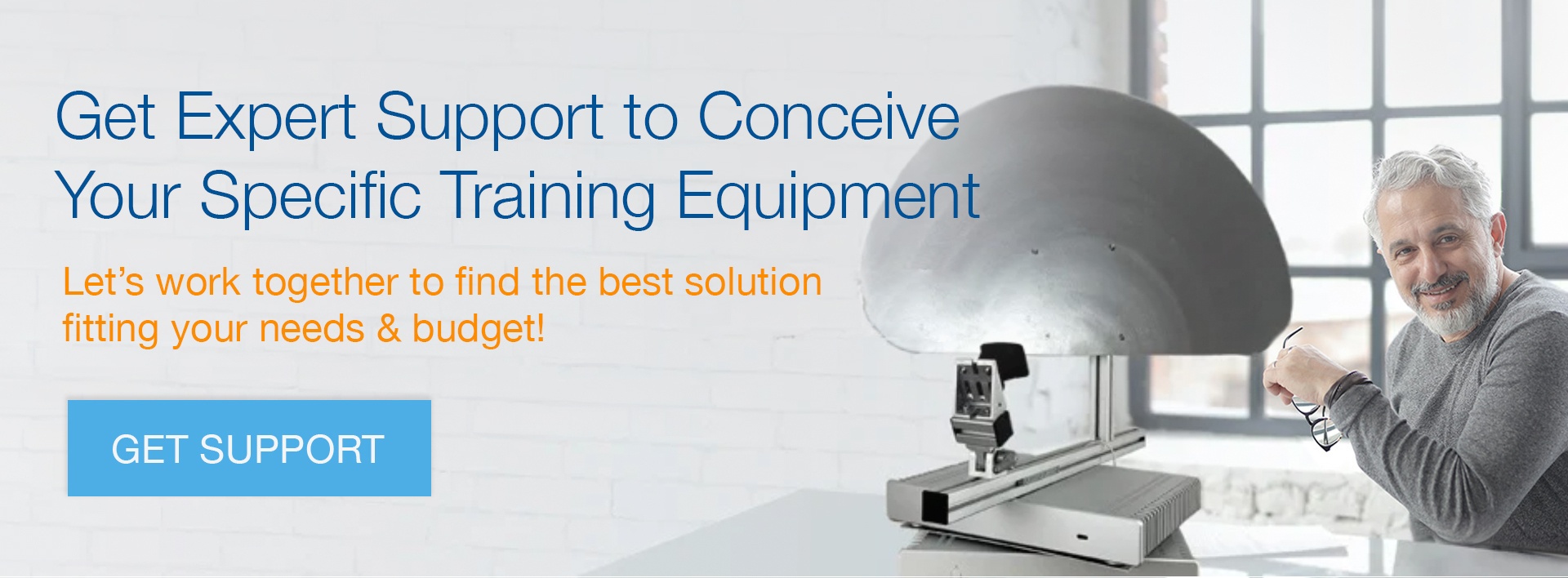Competency-based training for Air Traffic Safety Electronics Personnel is challenging. Trainees need an operating replication of a real ATC environment including AIS, Meteorology, Communication (voice and data), navigation, surveillance, data processing and automation, system monitoring and cyber security infrastructure. This article suggests and approach of how to proceed.
 The market is crowded with ATCO training simulators. This is easy to understand.
The market is crowded with ATCO training simulators. This is easy to understand.
There is a huge demand by the Aviation Academies and the solutions are relatively easy to build.
It just requires a convincing user interface and a correct software-based replication of the processes, and then everything else can be simulated at a relative low cost.
Hmmm - wait a minute ...
That would not work for ATSEP. And that makes the dilemma. Almost none of the existing Aerodrome environments out there in the market cannot be used for ATSEP training.
Let us now have a look at the main ATC systems, then let us put it in line with the ICAO structure, as detailed in DOC 10057. Hereafter let us produce a requirement list of differentiating factors.
Main Systems and Sub-systems in an ATC Infrastructure
 The main components in an ATC system are (list not exhaustive):
The main components in an ATC system are (list not exhaustive):
- The over-all ATC working positions and servers allowing to display data
- NOTAM System (data set that contains in a structured format, which can be fully interpreted by an automated system without human interpretation)
- Event Monitors (EM)
- FDPS (Flight Data Processing System, responsible for collecting and interrogating aircraft position-related data derived from on-board navigation and position fixing systems)
- Safety Nets ( system to alert aircrew/ATCO of a hazardous situation such as risk of aircraft collision, terrain collision, or airspace penetration)
- Surveillance Data Processing System (SDPS). EUROCONTOL suggests that such a system is fed by sub-systems like
- ARTAS (ATM Surveillance Tracker And Server)
- SASS-C (Surveillance Analysis Support System for ATC-Centre)
- RMCDE (Radar Message Conversion and Distribution Equipment enabling surveillance data exchange)
- RADNET (Radar Network, an intelligent logical network for the distribution of surveillance data)
- ASTERIX (All Purpose Structured Eurocontrol Surveillance Information Exchange, the EUROCONTROL Standard for the exchange of Surveillance related data)
- Recording and Replay Systems
We would also add the following to this list as it is an important sub-system - RDPS (Radar Data Processing System).
- Time Reference System
- VCS (Voice Communications System)
 Further upstream the radar towers and in the field, we also find
Further upstream the radar towers and in the field, we also find
- Primary and Secondary Surveillance Radars,
- ADS-B antennae,
- NAVAIDS systems,
- calibration systems like RASS-S etc.
We will handle these Surveillance SUR and Navigation NAV oriented systems in a subsequent article of this series.
How does ICAO structure their training?
ICAO structures the various service areas of the ATSEP into the following main blocks:
- Aeronautical Information Services (AIS)
- Meteorology (MET)
- Communication (COM)
- Navigation(NAV)
- Surveillance (SUR)
- Data Processing (DAT)
- System Monitoring & Control (SMC)
We see that parts of the infrastructure will be treated from various perspectives in different learning subjects. For instance the SDPS system is part of surveillance (SUR) and part of data processing systems (DAT).
Technical Differentiating Factors
When choosing an ATSEP training environment, it needs to include the following:
- Operational System: Operational
 architecture in full compliance to ICAO standards (the compliance requirements concerns also all backend functions like communication via the right protocols and providing the right server architectures
architecture in full compliance to ICAO standards (the compliance requirements concerns also all backend functions like communication via the right protocols and providing the right server architectures - Simulator: Simulation feed so simulate the real-life traffic and potential challenges or alerts. Such a simulation environment also includes pseudo-pilot working positions
- Exendability: the system needs to be open and modular, to add even more features, e.g., encrypted communication between the various subsystems.
- Openness: The system shall allow to also integrate external real-time signals (e.g., RadNet data, ADS-B live data etc)
- Front-End Adaptability: ICAO requires that the system at the front end looks like the system in use. The deployed training environment needs to respond to this requirement.
The ATSEP Advantage
Such an infrastructure will allow to do almost all training requirements. The open system requirements will even allow to start small. It would be an illusion to have the complete system implemented in one go. But having a standard modular infrastructure allows to complement the system step by step.
ATCO & ATSEP: Two Meals for the Price of One
When properly planned, such a training environment will respond for both requirements, ATCO and ATSEP. This combined approach has several advantages:
- ATSEP and ATCO personnel can learn together, not only their procedures but also the ATSEP-ATCO interaction, like in real life situations
- The ROI of such a system is much higher, no doubling of infrastructure
- Both groups will benefit from infrastructure extensions of the other
Read more on training solutions and concepts for ATSEP in accordance with ICAO 10057.
References
- More articles on ATSEP training in accordance with ICAO 10057 (2018 - today), by Dawn M. Turner, Dennis Vasilev, Prof. Eric Moskwa, Dr. Ulrich Scholten and more
- More articles on Radar Training Systems (2018 - today), by Dennis Vasilev, Dr. Ulrich Scholten and more
- Manual on Air Traffic Safety Electronics Personnel, Competency-Based Training and Assessment DOC 10057 (2016), by ICAO




